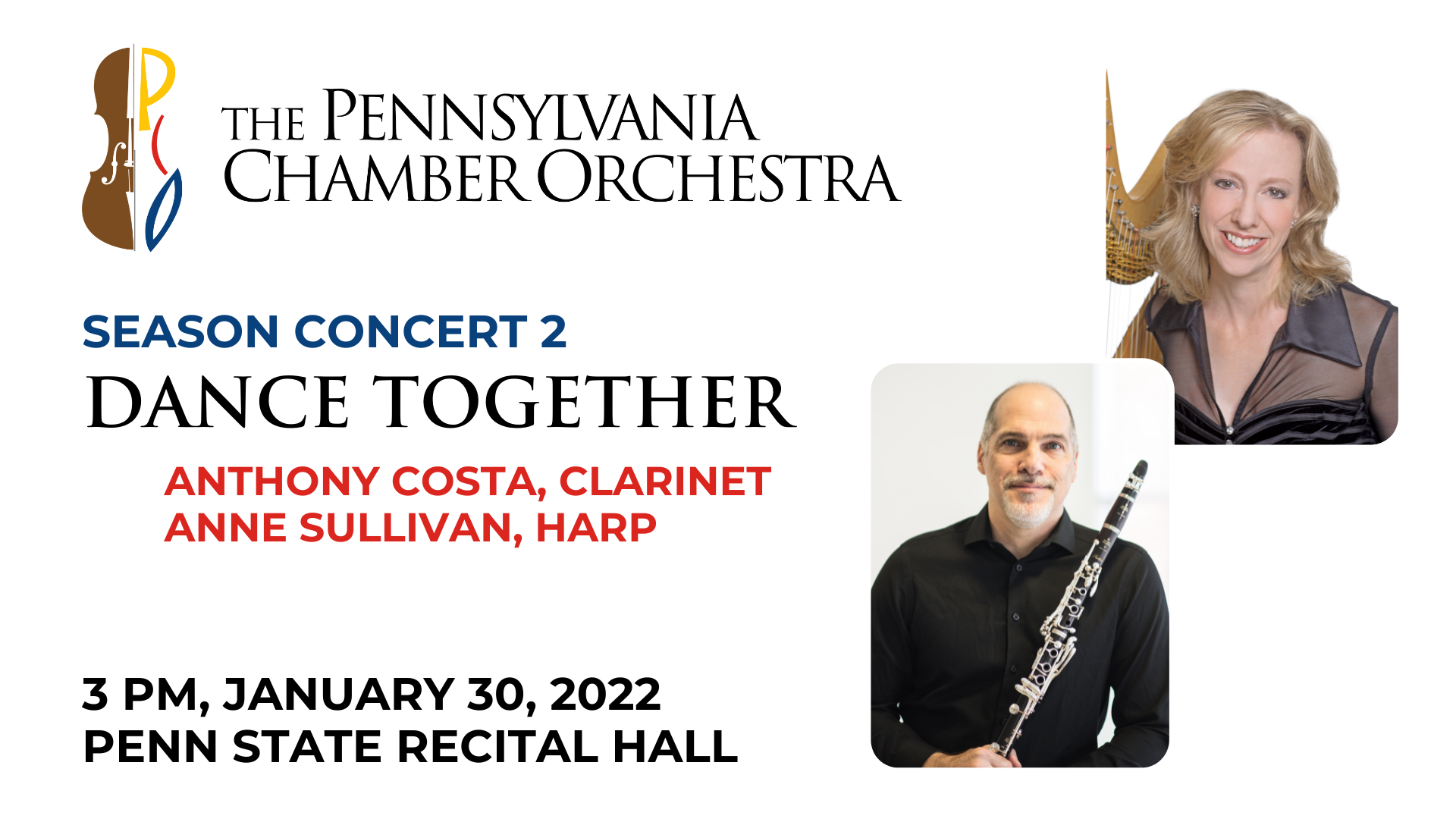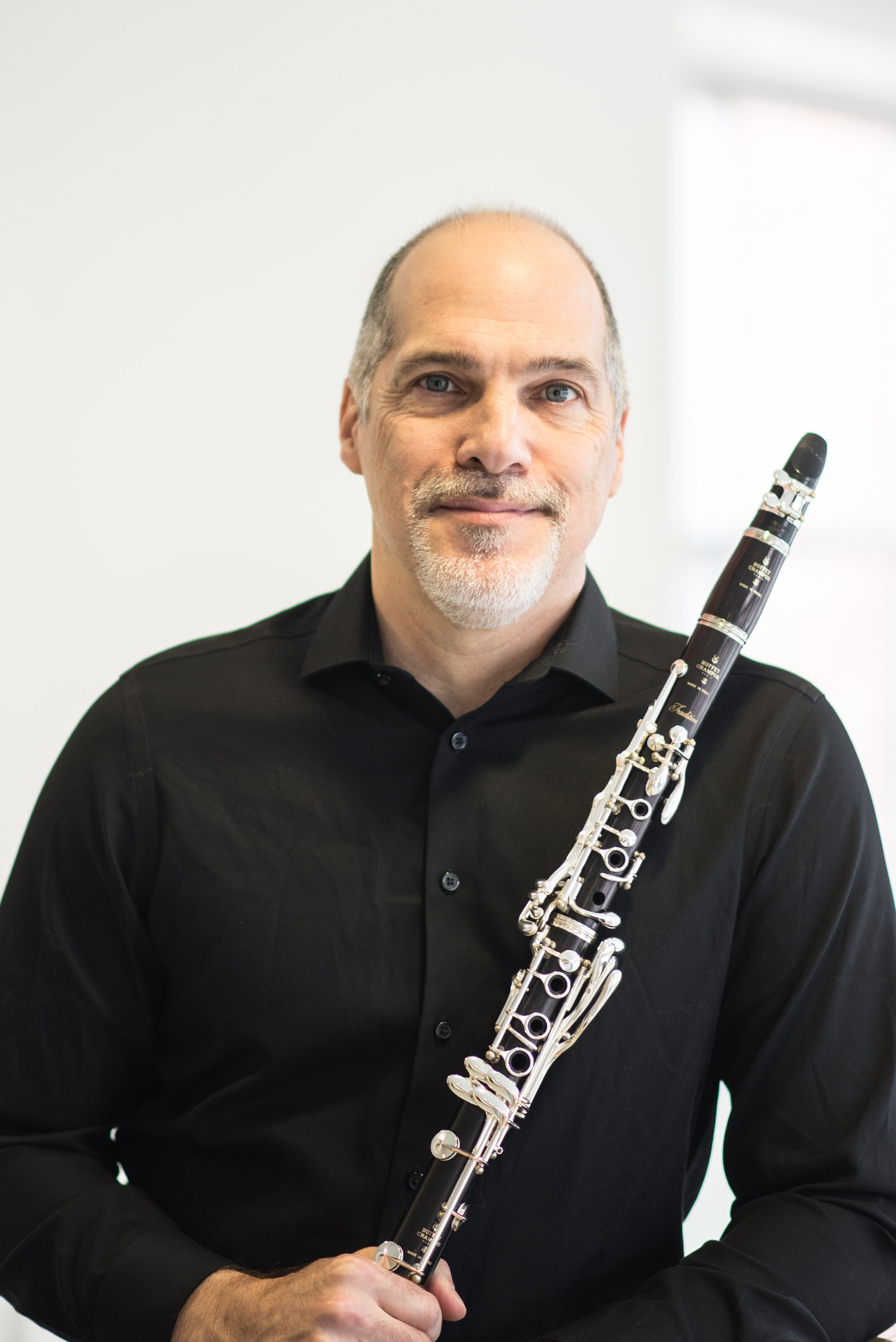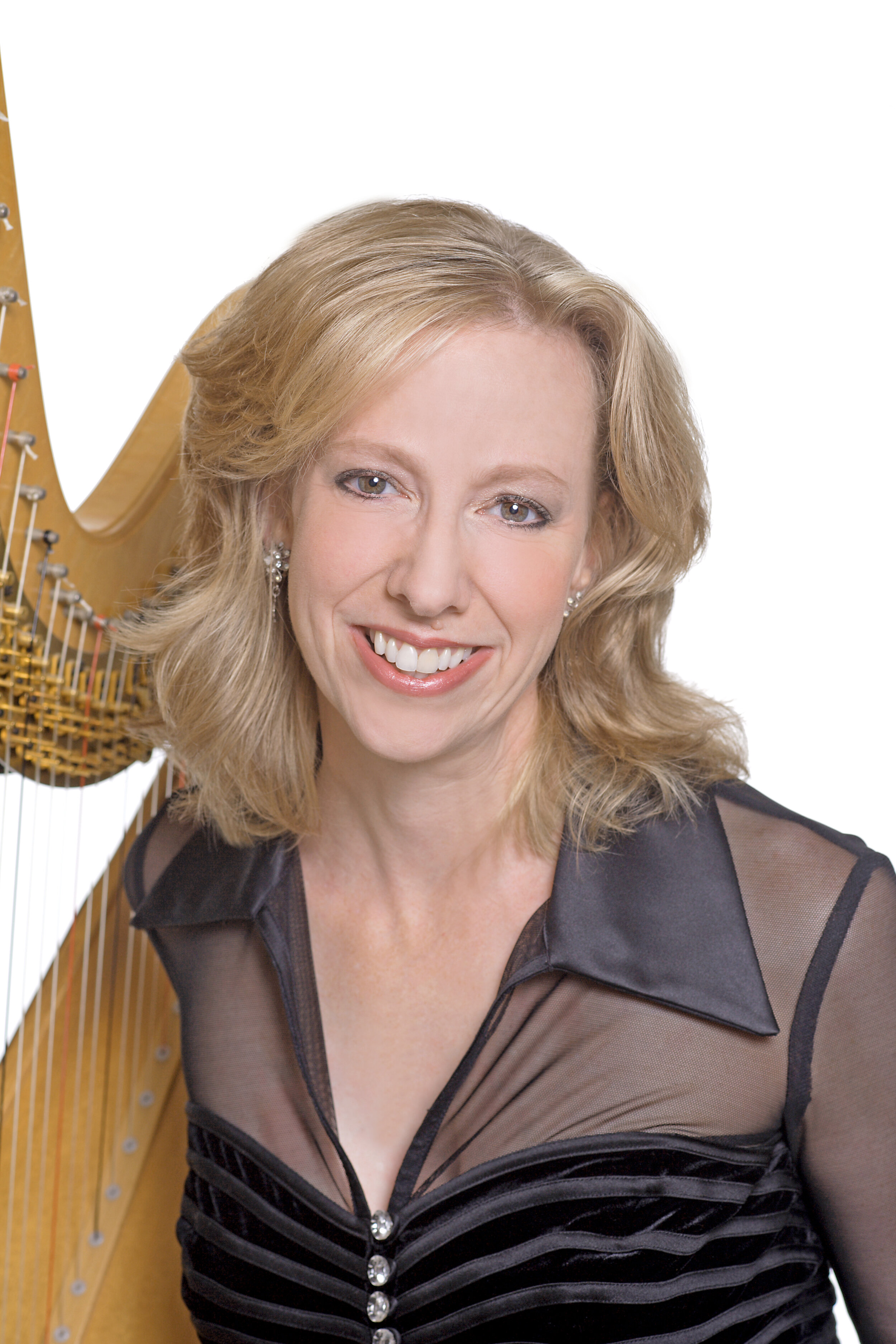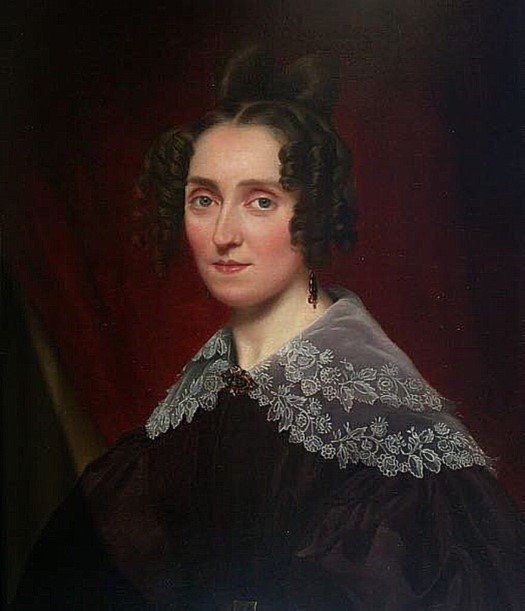Season Concert 2: Dance Together
Sunday, January 30, 3 pm - Penn State Recital Hall
Claude Debussy - Sacred and Profane Dances
Aaron Copland - Clarinet Concerto
Louise Farrenc - Symphony No. 3 Op. 36
Concert Sponsor: Nancy Eaton
Guest Artist Sponsors: Jim Eisenstein in memory of Ginny Eisenstein, Koch Funeral Home, & Nancy Toepfer
Program Notes
DEBUSSY. In 1897, the venerable Parisian instrument maker Pleyel and Wolff commissioned Gustav Lyon to design a chromatic harp. In layman’s terms, the chromatic harp expanded on the standard pedal harp by adding extra strings that allowed a harpist to play all of the notes of a chromatic scale without having to use the harp’s pedals to fill in the half-steps.
Seeking to develop a market for its new instruments, Pleyel and Wolff attempted to convince conservatories to offer courses in the chromatic harp. The company also commissioned Claude Debussy, famed for his groundbreaking Prélude à l’aprés-midi d’un faune and for the more recent opera Pelléas et Mélisande, to compose a work that featured their invention.
The first cross-strung harp is believed to have been created in the late 16th century in Spain where it was known as the arpa de dos órdenes (harp of two rows). Its popularity reached its peak in the late 17th century, and declined thereafter into the early 18th century. The reasons for its decline are complex, including the cultural displacement of Spanish music and musical instruments at court.
The Sacred and Profane Dances were composed while Debussy’s life was in turmoil—he had abandoned his wife for another woman, his wife Lilly attempted suicide, and simultaneously Debussy was consumed with creating his orchestral masterpiece La Mer.
To fulfill his commission, Debussy used the collective title Danses for the work, which contains two movements, both in triple meter and A-B-A form. The slow Danse sacrée was suggested to Debussy by a piano piece by his friend, composer and conductor Francisco de Lacerda, but it also owes something to Erik Satie’s Gymnopédies, of which Debussy was fond enough to transcribe two for orchestra. A vague ritualistic atmosphere, with slow-moving modal sonorities, often in parallel octaves, accounts for the title “sacred dance.”
Bass notes in the harp provide a bridge to the Danse profane, which is made of delicate, waltz-like music. In the several sections of the dance, the harp part requires a variety of techniques: arpeggios, glissandos, repeated-note patterns, broad chords, and dissonant grace notes. In the end Debussy made sure his music was playable on cross-strung and on pedal harps.
Copland. In the 1920s, 30s and 40s a number of performers attempted to bring classical music and jazz onto the same stage. One famous early effort occurred on a snowy afternoon on February 12, 1924, at Aeolian Hall in Manhattan. In a concert titled "An Experiment in Modern Music” Paul Whitman led his Palais Royal Orchestra in a much-anticipated concert of classics and jazz before an audience consisting of vaudevillians, concert managers, composers, symphony and opera stars, flappers, cake-eaters, all mixed up higgledy-piggledy. Many influential figures of the era were present including Victor Herbert, Walter Damrosch, Igor Stravinsky, Fritz Kreisler, Leopold Stokowski and John Philip Sousa.
After a long and a less than exciting series of works the audience was beginning to tire and to drift out of the hall when who should appear on the stage but pianist George Gershwin. The orchestra’s lead clarinetist, Ross Gorman seized the attention of the departing crowd with the distinctive opening glissando of George Gershwin’s Rhapsody in Blue, something he improvised on the spot.
On that day, late in the concert, the clarinet glissando that opens the Rhapsody in Blue became one of the most recognizable few seconds in music, rivaling only the opening of Beethoven’s Fifth Symphony. Apparently the clarinet was the instrument destined to lead in the movement for unification of classics and jazz.
In ensuing years a few conductors and bandleaders tendered commissions to classical composers. Woody Herman, for example, persuaded Stravinsky to compose his Ebony Concerto (for clarinet and jazz band) in 1945. Benny Goodman, “The King of Swing,” reached even more deeply into the classical aesthetic, requesting pieces for non-jazz ensembles that he could play as a “classical” clarinetist. Thus were born Bartók’s Contrasts (for clarinet, violin, and piano) in 1938 and Hindemith’s Clarinet Concerto in 1947. Herman and Goodman approached Aaron Copland at about the same time, the former in the summer of 1946, the latter in early 1947. Goodman became the successful suitor, offering a very substantial fee of $2,000, and Copland set to work shortly thereafter, while on tour in South America.
Copland’s Concerto consists of two movements, rather than the traditional three. The first movement, marked “Slowly and expressively”, showcases the clarinet’s ability to blend with strings and to play lyrically. The virtuosity that audiences expect from a piece called “concerto” doesn’t appears until the cadenza that links the two movements. Fans of Leonard Bernstein might hear hints of his style in the cadenza, as the soloist leaves the wistfulness of the first movement behind and transitions to Latin-jazz influenced second (marked “Rather fast”). The piece has been recorded many times, including a recording by Goodman himself.
Farrenc. Born Jeanne-Louise Dumont, Louise Farrenc showed considerable skills as a pianist from a young age. She subsequently had several prestigious teachers, including two of the best pianists of that time, Johann Nepomuk Hummel and Ignaz Moscheles. She also showed promise as a composer, beginning study at the Paris Conservatory when she was fifteen years of age.
In 1821 she married Aristide Farrenc, a flutist she met at the Conservatory and took his last name. Farrenc toured as a pianist for years, her reputation as a virtuoso becoming such that, in 1842, she was appointed Professor of Piano at the Paris Conservatoire – the only woman to hold a permanent faculty position at the Paris Conservatoire in the 19th century. She was, however, paid less than her male colleagues until 1850, when she requested and received equal pay, based in part on the successful premiere of her Op. 28 Nonet for strings and winds. She was recognized as a superb piano teacher, with many of her students winning awards and going on to solo careers. Her Études were also added to the Conservatoire’s piano curriculum.
In 1841, Farrenc composed the first of her three symphonies, with the second following four years later. The latter was a particular success. Despite the fact that her concerts as a pianist and as a composer were consistently well-received, she had difficulty enticing orchestras to perform her symphonies. The Third Symphony, completed in 1847, had to wait until 1849 for its first performance, when it was given by the Société des Concerts du Conservatoire conducted by Narcisse Girard. The work was praised by the likes of Robert Schumann and Hector Berlioz. Perhaps frustrated by the lack of performance opportunities, the Third Symphony proved to be Farrenc’s last orchestral composition, and she moved increasingly toward chamber music in her later years.
While her first two symphonies filled the classical mold of composers like Mozart and Beethoven, Farrenc’s Symphony No. 3 explores the romantic world of Carl Maria von Weber and Felix Mendelssohn.
In the first movement, after a brief, meandering introduction, three melodies are distributed across the orchestra. The music is developed and shared with various sections of the orchestra, the principal melodies return and the movement is brought to a forceful conclusion. The second movement, slow and songlike, was characterized by a reviewer at the premiere as “noble, elevated, religious, and graceful at the same time.” The main theme has the character of an orchestral chorale followed by a turbulent section and then the return of the main melody.
The third movement is a Scherzo and trio in the mode of Felix Mendelssohn’s A Midsummer Night’s Dream. The dramatic fourth movement unfolds with energy and intensity. Unwilling to submit to the temptation of a finale in a major mode, Farrenc brings her musical journey to a close with the full weight of the key of G minor.
Program notes by Conductor Laureate, Douglas Meyer.






